- Python
- Java
- Javascript / Jquery
- C, C# & C++
- SQL
- PHP
- Go
- Ajax
- Visual Basic (ms office)
- Angular
- Laravel
- .net & asp.net
- Flex, Flash
- Linux
- Swift
- Rust
- Matlab
- Django
- Ruby On Rails
- MEAN Stack
- MERN Stack
- MEVN Stack
- LAMP Stack
- LEMP Stack
- LAPP Stack
- LEAP Stack
- LLMP Stack
- XAMPP Stack
- WAMP Stack
- WIMP Stack
- MAMP Stack
- Flutter Stack
- Serverless Stack
- Misc & Others
- Browse All Categories
iOS App Development: Unlocking Business Success with Powerful Applications
iOS app development has become a dynamic and highly sought-after field in today's digital landscape. Since the popularity of Apple devices is increasing day by day, the demand for unique and user-friendly apps continues to increase Whether you are a beginner in iOS app development or a professional developer having the desire to grow your skill set, diving into the world of iOS app development opens up tons of opportunities. From crafting immersive user interfaces to integrating cutting-edge features and leveraging the power of Apple's ecosystem, this exciting realm offers a platform to bring your creativity and ideas to life.
In this comprehensive guide, we will be discussing things like the basics of iOS app development and tools and technologies involved in the app development process which will help you to begin your journey to build apps that can impact millions of users worldwide. Hope you are ready to discover your potential and start an exciting journey into the world of creating apps for iOS devices!
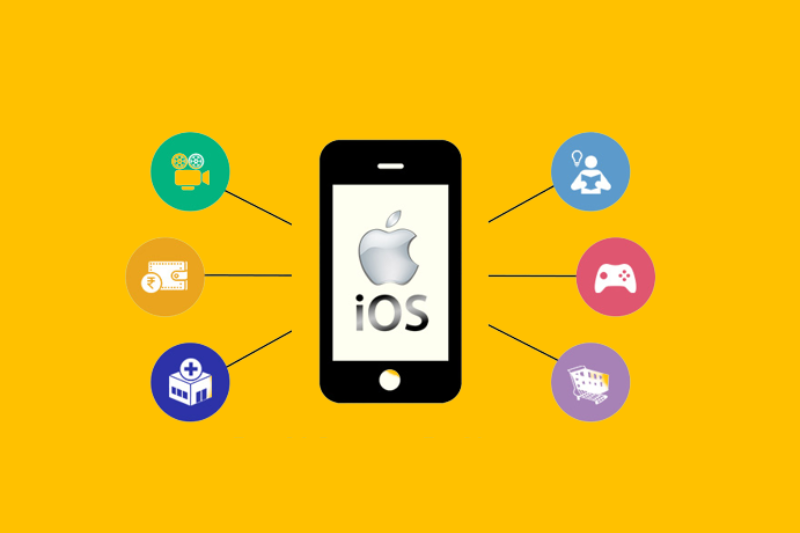
Features of iOS App Development
- Modern syntax, strong typing, extensive libraries.
- Easier design, development, and testing.
- Simplifies UI element design.
- Facilitate various functionalities.
- Powerful layout system for responsive UI.
- Apps distributed through Apple App Store.
- Data persistence and synchronization.
- Protects user data.
- Updates and alerts even when an app is inactive.
Importance
of iOS App Development
Apple's mobile operating system is popularly known as iOS. It powers all Apple devices like iPhones, iPads, and iPod Touch devices. Apple devices offer to provide advanced security features and a wide range of functionalities and thus offer a seamless user experience. iOS app development involves creating applications specifically designed for these devices, taking advantage of their unique capabilities and features. With millions of iOS users worldwide, developing apps for iOS offers significant opportunities. Apple's Apple’s App Store is a platform where developers can distribute their creations and showcase their potential. iOS users have the tendency to spend a lot on high-quality apps and hence the iOS platform is quite profitable for app monetization.
Getting Started with
iOS App Development
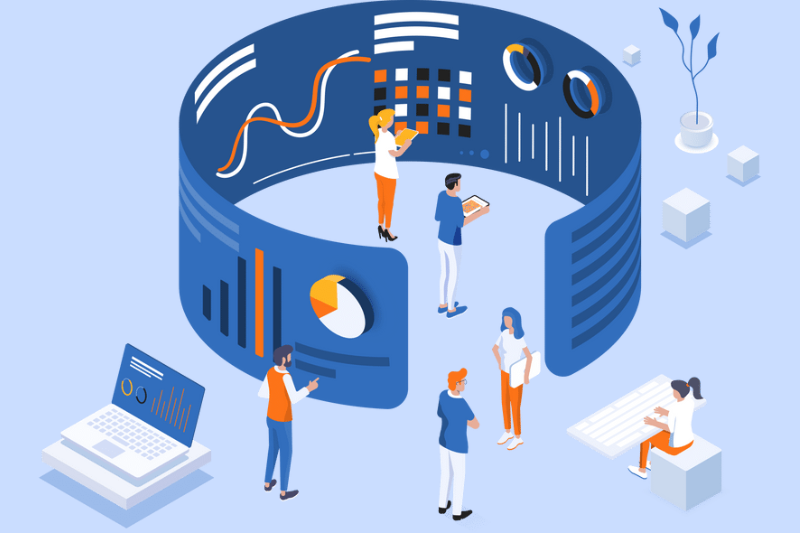
Setting up the Development Environment
Setting up the development environment in iOS is the first step toward creating robust and efficient apps. You need to have a Mac computer that runs a macOS in order to get started. You will then need to download the Xcode tool from the Mac App Store which is the min development tool to build iOS apps. Install Xcode and its accompanying Command Line Tools to access essential development utilities. Xcode provides a comprehensive IDE that includes a code editor, a simulator for testing apps on different iOS devices, and a range of debugging and profiling tools. Apart from this, you need to enroll yourself as a developer in the Apple Developer Program so that you can deploy your apps on real devices and distribute them through the App Store. By setting up your development environment properly, you lay the foundation for a seamless and productive iOS app development journey.
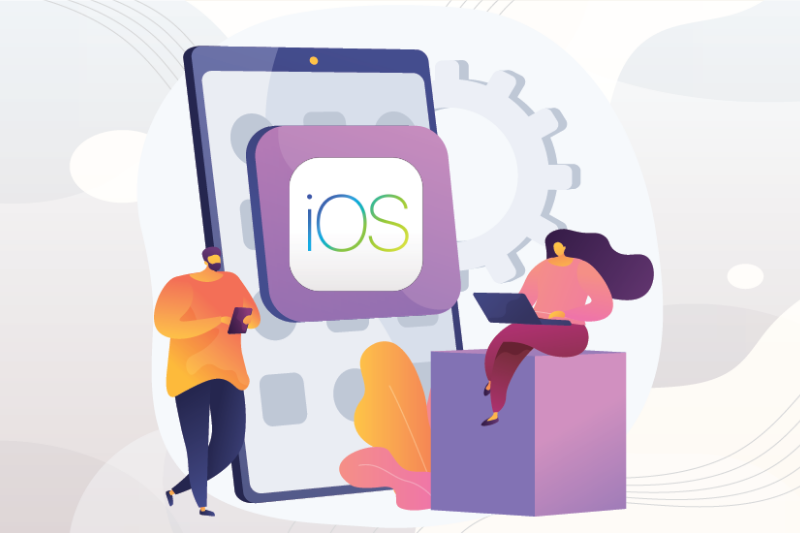
Choosing the Right Development Tools
Choosing the right development tools is crucial for efficient and successful app development. The main tool in iOS App development is Xcode which is Apple’s integrated development environment (IDE) Xcode provides a range of features such as a code editor, debugging tools, interface builder, and simulator for testing. Another important consideration is the programming language. While Objective-C has been traditionally used, Swift has gained popularity due to its modern syntax and safety features. You can also rely on third-party libraries and frameworks to accelerate the app development process and add your own features depending on your requirements. It’s always better to do research and experiment with different tools and technologies and check whether they match your project goals, and the expertise of your development team and is scalable for the long term. If you select the appropriate development tools, you can ensure an efficient development environment that can facilitate a seamless app creation process.
Key Concepts and Technologies in
iOS App Development
Swift Programming Language
Swift is a versatile and intuitive programming language designed for iOS, macOS, watchOS, and tvOS development. Its concise syntax and an extensive standard library make it a developer-friendly choice for building robust and efficient iOS apps.
Xcode IDE
Xcode is the go-to IDE for iOS app development. It offers a complete set of development tools, including a code editor, visual interface designer, debugging capabilities, and built-in simulators for testing your apps on various iOS devices.
Interface Buildere
Interface Builder is a graphical tool within Xcode that simplifies the process of designing user interfaces for iOS apps. It allows you to visually create and customize app screens, arrange elements, and define interactions without writing code.
Core Data
Core Data is Apple's framework for object-oriented data persistence. It provides a convenient way to store and manage app data, enabling efficient retrieval and manipulation of information within your iOS app.
Designing and Prototyping iOS Apps
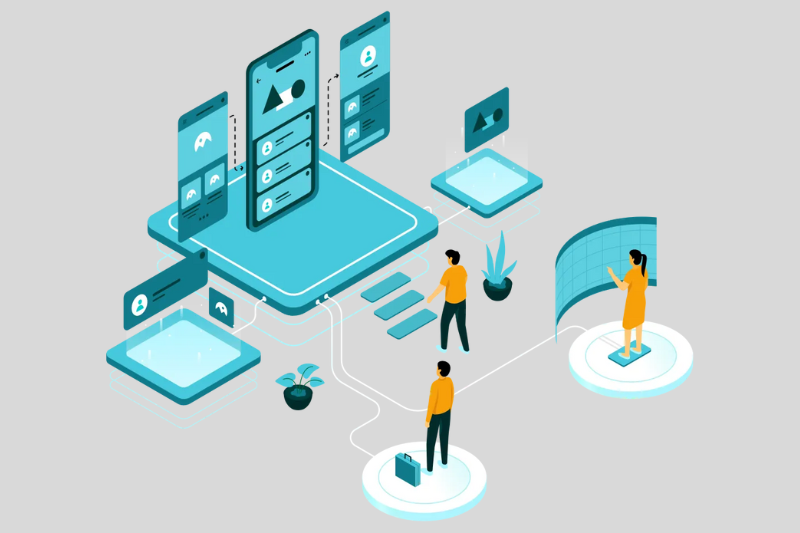
User Interface Design:
User interface (UI) design plays a crucial role in iOS app development. It focuses on creating visually appealing and intuitive interfaces that enhance the user experience. In iOS, UI design is guided by Apple's Human Interface Guidelines, which provide design principles and best practices. Key considerations include simplicity, consistency, and visual hierarchy. Designers always aim to build a simple and organized interface and ensure that the various elements in the app UI of the app look and work the same way.
Visual hierarchy is used to organize content, prioritize important information, and guide users' attention. Navigation is another critical aspect, with designers aiming to create an intuitive and seamless navigation system. Gestures and interactions are carefully designed to be discoverable and provide feedback to users.
It is also important to ensure that the app is not targeted at specific users only but should be accessible to even those with disabilities. If iOD developers focus on the UI design, they can create apps which are both user-friendly as well as appealing in order to increase user engagement and please users.
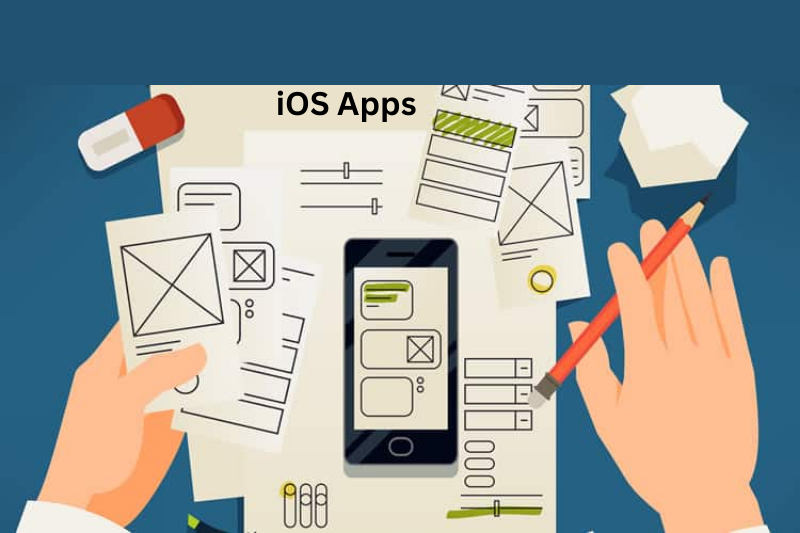
Wireframing and Prototyping
Wireframing and prototyping are vital steps in the iOS app development process. Wireframing involves creating a basic visual representation of the app's structure and layout. It helps in defining the placement of UI elements, navigation flow, and overall user experience. By creating wireframes, designers and developers can quickly iterate and refine the app's structure before diving into detailed design and development. The prototyping process in iOS app development involves creating interactive mockups of the iOS apps. It allows designers and stakeholders to visualize and experience the app's functionality before investing significant time and resources in development. Prototypes can be used to gather user feedback, test usability, and identify potential improvements. Developers find it easy to streamline the design process, detect issues prior to app release and create intuitive and user-centered apps through the process of wireframing and prototyping.
Developing iOS Apps

App Architecture in iOS App Development
App architecture in iOS app development refers to the overall structure and organization of an app's codebase. It involves defining how different components and modules interact with each other to achieve the desired functionality. Various types of architectural patterns are used in iOS app development. These patterns include Model-View-Controller (MVC), Model-View-ViewModel (MVVM), and Clean Architecture. Each pattern is quite different from one another and has its own advantages over the other. The choice of selecting a pattern completely depends on the complexity and requirements of the app. If an app has a structured app architecture this can positively impact code reusability, and maintainability, It also facilitates the developers to add more features, fix bugs, and collaborate with other developers.
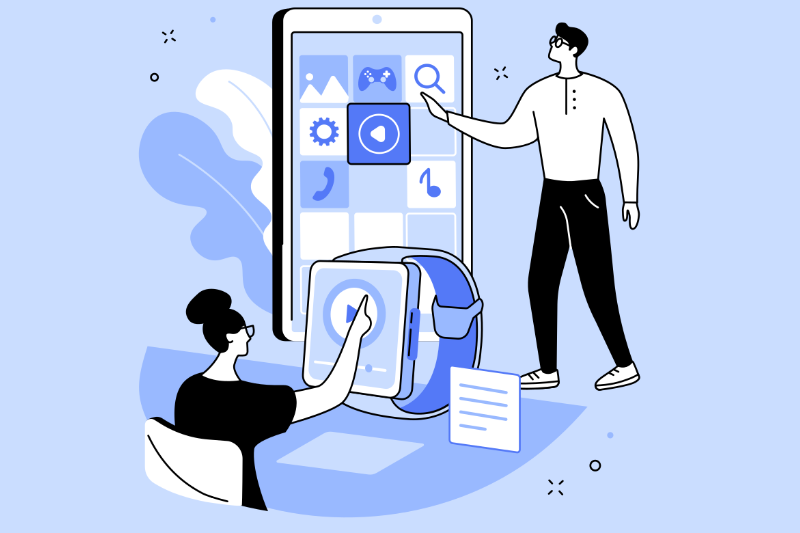
Coding and Debugging in iOS App Development
Coding and debugging are fundamental aspects of iOS app development. Coding involves writing the app's logic and functionality using programming languages like Swift or Objective-C. Developers have to write clean and efficient code. Follow the best practice of app development and comply with Apple’s guidelines set for coding. The process of detecting and fixing issues or bugs in a code is known as debuggingDevelopers use debugging tools provided by Xcode, such as breakpoints, to pause the execution of the app, inspect variables, and track down errors. It is very essential to follow proper coding and debugging practices in order to create high-quality and user-friendly apps.

Testing and Deployment in iOS App Development
Testing and deployment are critical phases in iOS app development. Testing involves systematically checking the app's functionality, performance, and usability to ensure it meets the intended requirements. Various testing methods are employed, including unit testing, integration testing, and user acceptance testing. Testing helps identify and fix any issues or bugs before the app is deployed to users. Deployment involves preparing the app for distribution through the App Store or other distribution channels. Developers need to follow Apple's guidelines for app submission, including preparing necessary metadata, creating app certificates and provisioning profiles, and adhering to App Store review guidelines. Through proper testing and deployment developers can ensure that the app is reliable and is ready to be distributed to the target audience.
Monetizing and Marketing iOS Apps
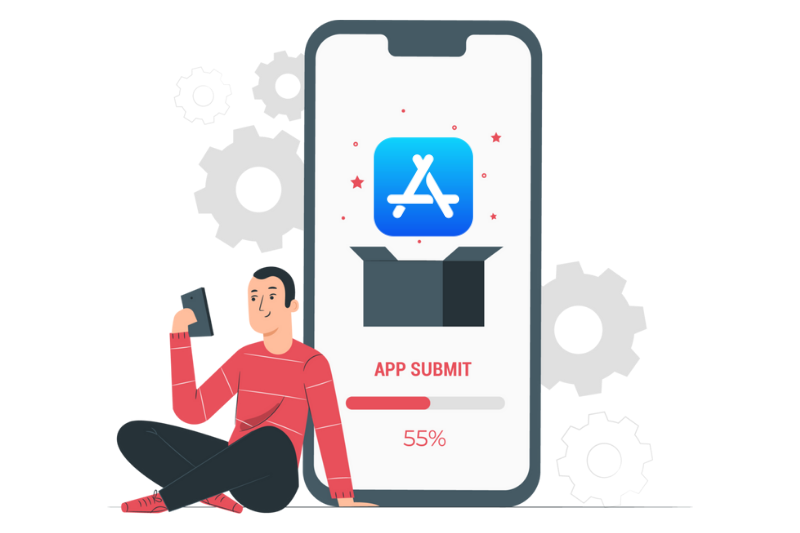
App Store Submission
The process of preparing and submitting an app to the iOS store for its review and distribution to the target audience is known as App Store submission. Before submission, developers need to ensure their app meets Apple's guidelines and requirements, including following design and content guidelines, implementing necessary privacy features, and providing accurate metadata and screenshots. It's crucial to thoroughly test the app and fix any bugs or issues before submission. Once the app is ready, developers submit it through the Apple Developer portal, providing all required information and assets. The review of the app is done by Apple's App Review team. They test the app functionality and make sure that all the guidelines are followed and the app is of quality. If the app successfully passes this review, then it is made available in the App Store for download. Successful App Store submission requires careful attention to guidelines, quality assurance, and compliance with Apple's policies

App Marketing Strategies
Effective app marketing strategies are crucial for promoting an iOS app, and enhancing its visibility, reach, and user adoption. These strategies include the availability of the app, making use of social media like Facebook and Instagram to create a strong online presence and attract more target audience, collaborating with popular developers to gain credibility, creating top-notch and appealing content to attract users, creating valuable content to attract users, incorporating ads in the app to reach specific audience groups, using media and social influencers for app reviews, and encouraging users to share the app to their friend and other people. These strategies can be extremely helpful to boost the app’s presence leading to more downloads and user engagement.
Frequently asked Questions
Learn about features from FAQ!
A: iOS app development primarily relies on the Swift programming language, which offers modern syntax, strong typing, and extensive libraries.
A: Xcode is the integrated development environment (IDE) used for iOS app development. It provides tools for coding, debugging, testing, and designing user interfaces.
A: Xcode's Interface Builder simplifies the process of designing UI elements using a drag-and-drop approach. It allows you to visually create and customize the UI of your app.
A: iOS provides a wide range of frameworks to facilitate various functionalities in app development, such as UIKit for UI components, Core Data for data persistence, Core Location for location-based services, and more.
A: iOS offers Auto Layout, a powerful layout system that allows you to design flexible and adaptive user interfaces. It automatically adjusts the UI elements based on different screen sizes and orientations.
A: iOS apps are distributed through the Apple App Store. You need to enroll in the Apple Developer Program, submit your app for review, and once approved, it will be available for download on the App Store.
A: iOS provides the Core Data framework for managing data persistence in your app. It allows you to store, retrieve, and query data. Additionally, iCloud integration enables seamless data synchronization across multiple devices for users with an iCloud account.
A: iOS provides various features and frameworks to protect user data, such as secure data storage, secure network communication, keychain services for managing sensitive information, and user permission requests.
A: Yes, iOS supports push notifications, which allow you to send updates, alerts, and notifications to users even when the app is not actively running. It is a powerful tool for engaging users and providing timely information.
A: Yes, iOS offers Apple Pay integration, allowing you to securely process payments within your app. Additionally, you can implement in-app purchases to offer additional content, subscriptions, or digital goods.
Conclusion
App architecture in iOS development involves organizing an app's codebase and defining how components interact. Common patterns include MVC, MVVM, and Clean Architecture, which enhance modularity and maintainability. Coding entails writing logic using Swift or Objective-C while adhering to coding guidelines. Debugging involves using Xcode tools like breakpoints to identify and resolve issues. Testing ensures functionality, performance, and usability, employing methods like unit and integration testing. Deployment involves meeting Apple's guidelines for app submission and preparing the app for distribution. Effective architecture, coding, testing, and deployment are crucial for successful iOS app development.


